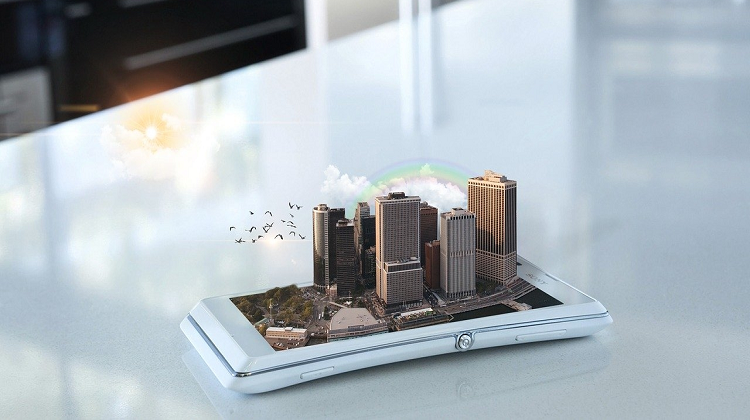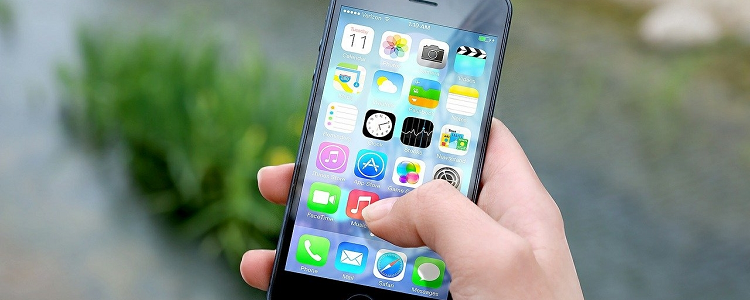Mobile phones have come a long way in a short space of time. The introduction of the Motorola DynaTAC 8000X in the US in 1983 brought portable phones to those who could afford one for the first time. Weighing in at 1.1kg and not dissimilar in size and shape to a literal brick, these phones are distant ancestors of the smartphones we see today.
With such rapid development in the smartphone industry in the past three decades, it begs the question – where do we go from here? Let’s look at what we might be able to expect from the future of the smartphone.
Rapid innovation in a short amount of time
By 1994, IBM had launched the first ‘smartphone’ – a touch-screen phone with the ability to call, email and fax. It even a digital calendar. The start of the 00s brought phones with colour display, the first camera phones and the beginnings of a 3G network. In 2007, the first iPhone was introduced to the world and the smartphone as we know it today was born.
But the phones of today are worlds apart from even their 00s predecessors. No longer purely a device to communicate with others, our smartphones give us everything – our schedules, calendars, to-do lists, music, cameras, and even a personal assistant. Gone is the need for a seperate music player or digital camera as smartphones have them all.
Smartphones as an alternative to laptops
Nowadays, you can access most things you need for work via a smartphone – email, instant messaging, video conferencing, text editors, cloud storage and more. You can completely customise your phone to meet your individual needs using apps too, and even access multiple applications at once. Pretty much anything a laptop can do, a smartphone can do.
With the addition of smartphones with larger screens, the ability to access and work on documents stored in the cloud and the ability to connect a keyboard and mouse to your phone via Bluetooth, a phone could very well replace a laptop as the main computing device you can take on the go. Plus, as the number of remote workers increases, so will their reliance on smartphones to keep up communications with colleagues across the globe.

So where can the smartphone go from here?
Innovation in smartphone tech is showing no signs of slowing. New models come out year on year with new features, faster processors and better cameras. What else could we see?
Faster and more powerful phones
It goes without saying that with every new smartphone release comes a faster phone with more storage and an altogether more seamless user experience. All signs point towards this continuing in the future as engineers continue to develop smaller, faster chips and storage.
One place which is a good benchmark for innovation in smartphones is the quality of the camera. In the future, we’re likely to continue to see the number of megapixels on our phone cameras continue to grow. Will we see it come close to the human eye? Only time will tell.
Cheaper and more accessible handsets
One of the consequences of new smartphone models coming out every year is that they depreciate quickly. Over time, this makes older (and simpler) models much cheaper. While not great for resale, this does make smartphones more accessible to a wider proportion of the global population. In fact, Deloitte predicts that smartphone ownership among adults in developed countries will surpass 90% by 2023.
More accessible for those with disabilities
Smartphones have already made life that little bit easier to navigate for people with various disabilities or physical impairments. For example, facial scanning and voice control make phones easier to use for those with limited motor functions or visual impairments.
In the future, we can expect to see features like this go even further to make smartphones even more accessible. For example, Google’s Project Euphonia is focused on improving speech recognition systems and how they understand impaired speech. This would help people with conditions like Down syndrome, cerebral palsy and brain injury to use smartphones more easily.
More sustainable for the planet
Manufacturing smartphones is an incredibly resource-heavy process. The rare earth materials that are required for the various components inside the phone are also not well-known for being sustainably sourced.
With growing calls for large corporations to put people and the planet above their profits, the future may see a shift to fairer, greener and more sustainable smartphones. If businesses are also looking to improve their corporate social responsibility (CSR) practices then they may also be tempted to pursue work phone contracts with those more ethical suppliers.

What will our future smartphones be able to do?
It’s hard to know exactly what the future of the smartphone will look like. But with the rate at which the smartphone industry has innovated and developed up to this point, instead of asking what will our smartphones be able to do, perhaps a better question would be what won’t our smartphones be able to do in the future.
About Westfiled Networks, your technology partner
Westfiled Networks is a trusted team, experienced with the latest technology and able to explain complex issues to you in a language you’ll understand. Contact us today to find out how we can help you.




